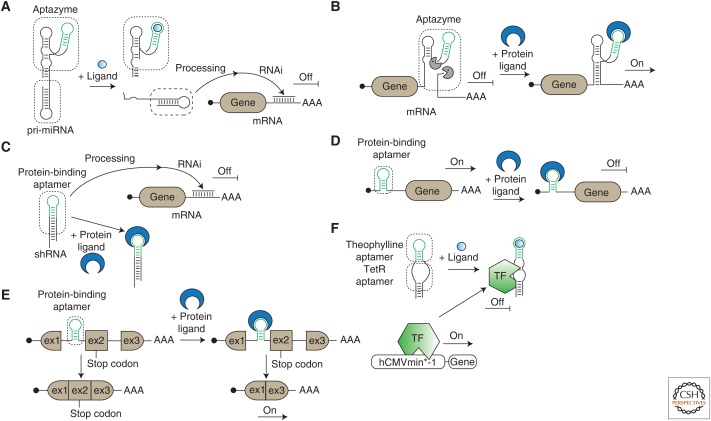Figure 2.
Posttranscriptional gene switches. (A) Aptazymes are fused to primary microRNA (pri-miRNA) molecules, enabling the ligand-responsive control of pri-miRNA processing and posttranscriptional target gene control. (B) Protein-responsive aptazymes are integrated into messenger RNAs (mRNAs) to regulate their stability, depending on the presence or absence of the protein ligand. (C) Protein binding to protein-binding aptamers that are integrated into small hairpin RNAs (shRNAs) inhibits shRNA processing and allows for protein-controlled target gene control. (D) Protein-binding aptamers integrated into the 5′ untranslated regions (UTRs) of mRNAs can be used to control translational initiation in a protein-dependent manner. (E) Integration of protein-binding aptamers into close proximity of splicing sites allows for protein-responsive alternative splicing regulation. (F) A TetR-binding aptamer is combined with a theophylline-responsive aptamer to enable the theophylline-dependent folding of the TetR-binding aptamer. When bound to its cognate aptamer, the TetR protein loses its DNA operator binding ability and influences gene expression at the transcriptional level. TF, Transcription factor; RNAi, RNA interference.

